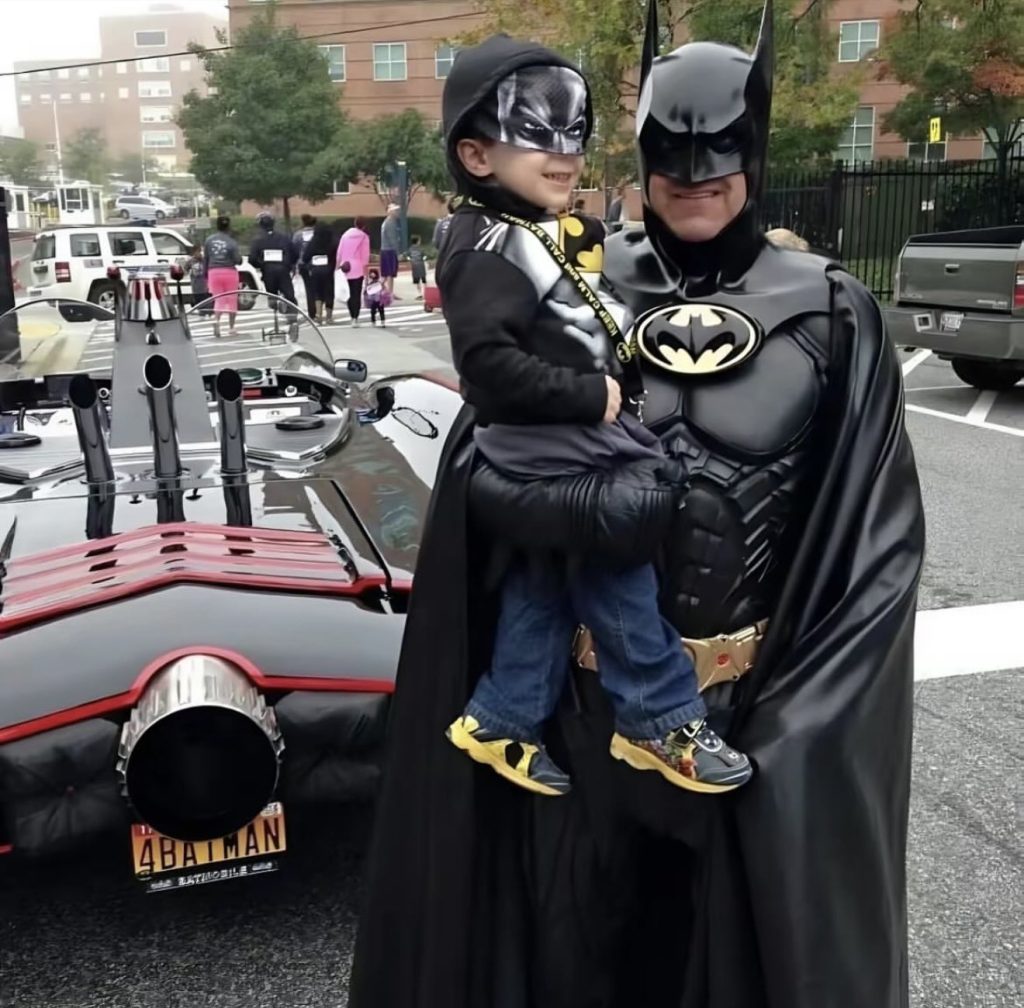The Batman of Baltimore

Pictured above is Batman, or, at least, someone dressed like Batman. The costume is impressive — body armor that doesn’t look like a t-shirt, a shiny Batman symbol and cowl, a utility belt, and a large flowing cape. And the Batmobile behind this Batman is even more impressive — it’s a Lamborghini outfitted with what appears to be an exhaust pipe for a a jet engine, as well as a bunch of other accouterments.
But this isn’t a guy dressed for Halloween. He was a hero. Not one that fought the Riddler or sparred with (and wooed) Catwoman or tussled with the Condiment King, but one that society valued for his efforts nonetheless.
The real name of the Batman pictured above was Lenny B. Robinson. By day, he was a (mild-mannered?) businessman, either the co-owner of an appliance repair shop in the town of Falls River, Virginia, according to the CBC, or one who “made his money in the cleaning business,” according to the Washington Post. (Superheroes will go a long way to mask their true identity.) But he didn’t just invest his profits in his business: he quietly used it to become a real-life version of the Caped Crusader, minus the punching bad guys part. As the Washington Post relayed, Robinson “spent hundreds of thousands of dollars, his brother said, on his ’60s-style Batmobile, a costume that seemed more real than those in the movies, and the trinkets he handed out to children, always autographed ‘Batman.’” Because that — helping children — was his true calling.
Robinson’s alter ego came to light in March 2012 when a video of him being pulled over went viral. A pair of Montgomery County, Maryland police officers noticed a guy dressed as Batman driving a not-quite-adorned black Lambo with one weird feature: instead of a standard license plate, the car had a picture of the Bat Symbol. The officers pulled over Robinson, as you’d expect. (One of the officers called in the incident; when the dispatcher asked if they needed backup, the officer replied, “You can send me Robin, if you wish.”) Robinson cooperated with the officers, handing over his license, registration, and batarangs (okay, maybe not), and told them that the actual license plates were in the glove compartment. He was let go with a warning, and the world had a field day with the video footage. The Washington Post became particularly interested and tracked down the Batman wondering if he was some kind of joker (sorry). But they discovered, instead, what he was really up to.
Robinson agreed that the Post could reveal his true identity, “but suggested [the reporter] do so by accompanying him to the cancer ward at Children’s National Medical Center in Northwest Washington for a superhero party thrown by the Hope for Henry organization.” Robinson didn’t just drive around to show off his cool car and similarly cool costume; he became Batman to bring joy to children who were hospitalized. And it wasn’t the easiest thing to do, either; per the Post, “It took him about 45 minutes to put on the black eye makeup and his cumbersome superhero uniform, which drained him of five to six pounds in water weight every time he wore it.” Additionally, he spent roughly $25,000 a year on Batman stuff to give out to those kids, but it was all worth it. For Robinson, helping kids this way was his calling.
Sadly, Robinson died tragically in August 2015. His Batmobile broke down on the highway one night and, when he went to check the engine, was struck by another car. The official DC Comics Batman Facebook page marked his passing with a note celebrating his life, per the CBC, stating, “Our thoughts are with the family and friends of Leonard Robinson, who shared his love of Batman with everyone around him.”
Bonus fact: There are a lot of great Batman movies but the 1997 film “Batman & Robin” is not one of of them. Starring Arnold Schwarzenegger as the villain Mr. Freeze, the movie is generally considered one of the biggest superhero box office bombs of all time. And yet, Schwarzenegger doesn’t disavow his work in the film — he even pays an annual fee to memorialize it in his own home. Peter Macgregor-Scott, the producer of “Batman Forever” (which came before “Batman & Robin”), shared the details with the Hollywood Reporter: “Storage after a movie like Batman Forever becomes a real element. A lot of the sets get folded and held so they are available for the next picture if need be. We didn’t keep the cave, because the cave is so unwieldy. You had to make the cave each time. All the unused bat costumes. All the wardrobe saved. The actors would like to walk off with pieces, and we have to be very careful that that happens to an absolute minimum. Arnold Schwarzenegger wanted a costume of Mr. Freeze. It went all the way up to the top of the studio. He had to sign a contract, and I think he pays $1 per year to borrow the costume. The lights in those costumes last 9,000 hours. He doesn’t have them on all day long, but he does turn them on quite frequently.”
From the Archives: Dun-nuh-nuh-nuh-nuh-nuh-nuh-nuh Lawsuit!: A lawsuit involving Batman, but not (only) the one you think.
